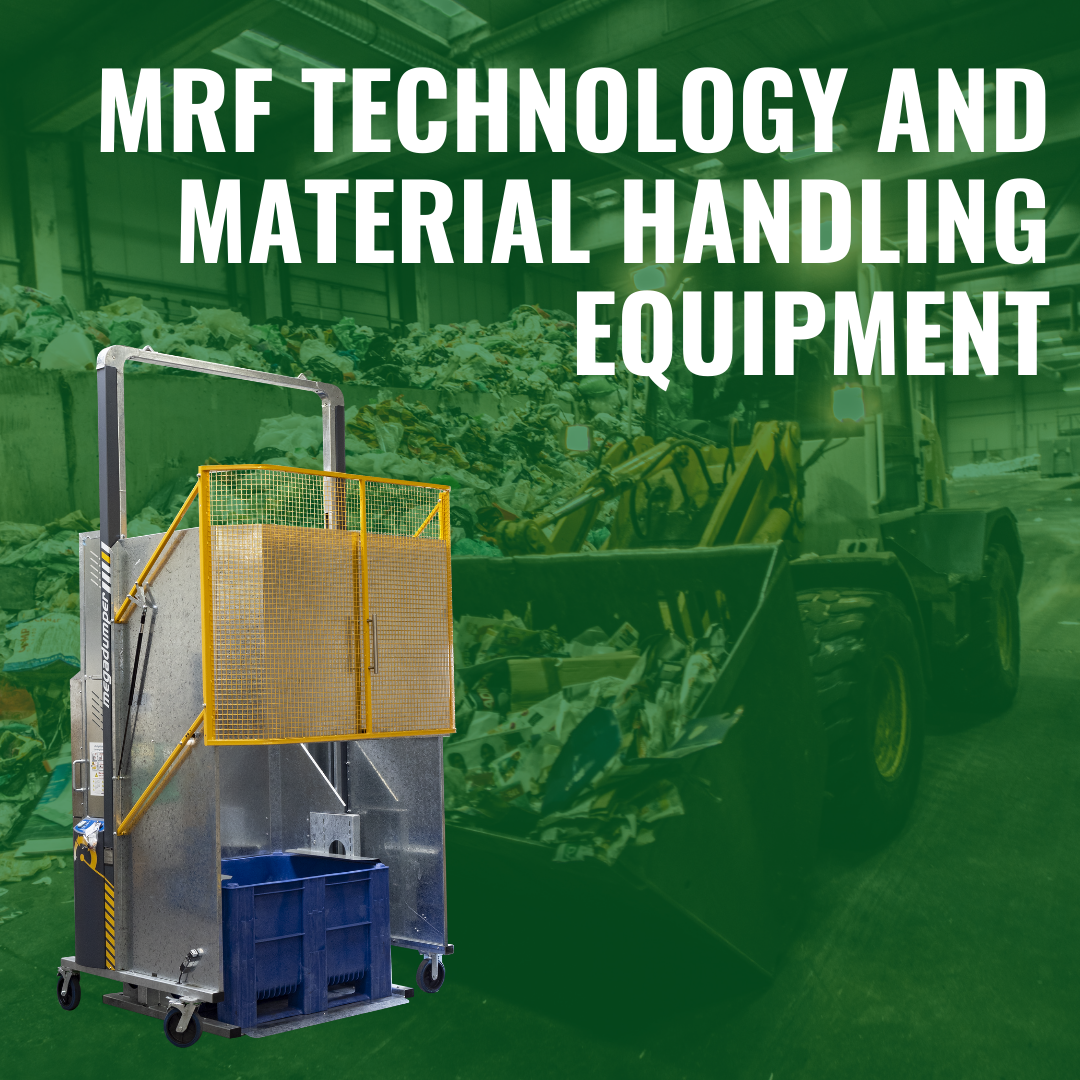We use cookies to make your experience better. To comply with the new e-Privacy directive, we need to ask for your consent to set the cookies. Learn more.
MRF Technology and Material Handling Equipment
From a distance, a material recovery facility looks like a simple system. We dump in raw recyclables. The MRF technology inside sorts, cleans, breaks down, and compacts those recyclables. On the other end, the MRF spits out neat bales of materials, ready for the market.

Of course, the process is much more complicated than that. For one thing, we need to move materials through the MRF environment, and it’s not always clear how to do so as safely and efficiently as possible. Today’s material recovery facilities use several types of material handling systems, and the best of them are designed to work hand-in-hand with all the machinery that sorts, cleans, and compacts recyclables for re-use.
Here are the material handling machines most material recovery facilities need to operate competitively, along with a few ways these machines interact with MRF technology along the way:
1. Front-End Loaders Start the MRF Process
In a single-stream recycling system, the haulers’ trucks arrive at the MRF yard, weigh their loads, dump them, and go. It’s up to the MRF staff to move materials from the tipping floor to the MRF system. Most use front-end loaders to accomplish this task. Loaders scoop up raw, mixed materials and empty these loads onto sorting tables or conveyor lines, starting them on their journey to a finished bale of salable goods.
2. Conveyor Lines Connect MRF Technology
After being loaded into the system, materials pass through a complex list of MRF technology:
- Robots may assist human staff, pulling contaminants off of sorting tables
- Optical sorters identify and separate materials
- Magnet separators pull out metals
- Disc sorters drop smaller items onto a separate track
- Star screen sorters separate finer materials from larger ones
- Air classifiers blow paper, plastics, and metals into separate lines
- Materials pass through washing machines
- Sometimes plastic bottles go through a perforator, glass through a crusher
- Eventually, most recyclables end in a baler, which compacts them into convenient cubes
The material handling system that moves these materials throughout this process is the conveyor line (or, more likely lines). You can’t plan or build a materials recovery facility without designing great conveyor line systems; they’re the main means of keeping the line moving. However, they can’t do everything.
3. Forklifts Handle Baled Recyclables and More
Once materials are baled for transport, forklifts are the go-to technology to handle them. Fitted with bale/carton clamps, lift trucks move the completed bales of materials into and out of storage. They load them into shipping containers, trains, and trucks. They’re quick and convenient, and operators are often available for hire.
But forklifts have another advantage: They’re versatile. In addition to grabbing bales with clamps, or even loading them onto pallets, forklifts can help with bulk dumping operations back on the main MRF sorting floor. (As we discuss in this previous post, sorting facilities and MRFs need mobile waste equipment more often than you might think.) Forward Bin Dumpers grab pallet bins and other bulk containers, giving lift truck operators the power to empty industrial-sized loads.
Finally, employers at MRFs should provide hydraulic Bin Dumpers, Bins, and electric tuggers for smaller material handling tasks along the processing line. This equipment allows a single employee to clean up spilled materials, cart loads through the system when lines go down, and respond to the unexpected — without risky heavy lifting or calling in large teams. Within the context of a modern recycling system, all this material handling equipment is just another crucial MRF technology.
